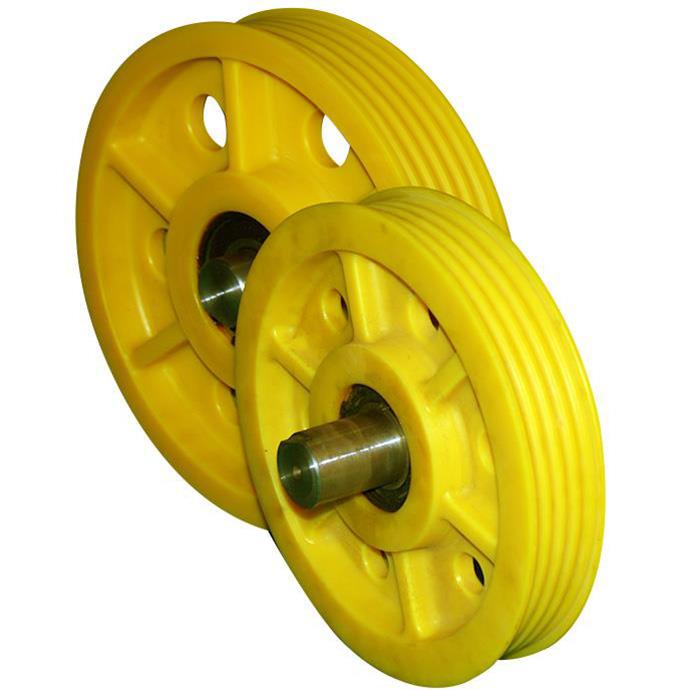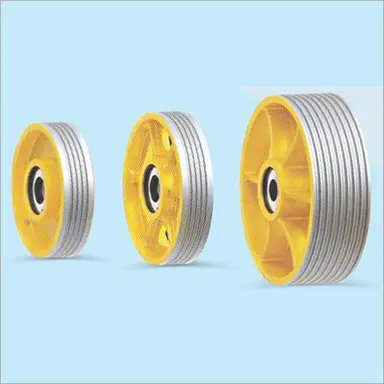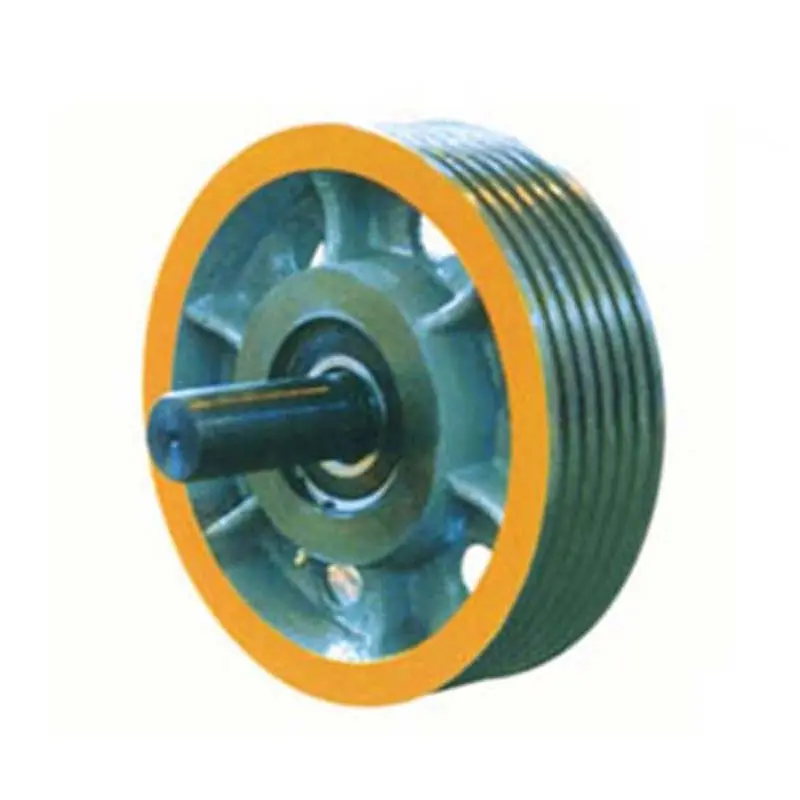Product Description
Product Description
Zinc Alloy Die Casting Double Pulley with Swivel Zinc alloy Zinc Plated
Labor-Saving Double Wheel Ring Crane Pulley With Shackle is Widely Used in American, Asian as well as the Mid East. It is 1 kind of most popular Cable Pulley Block all over the world. The size is from 375mm-845mm. NOTE *Special marks can be made according to customers’ requirments. *Special package can be made according to customers’ requirements. *We also offer steel wire rope, wire rope thimble, wire rope sleeve, high quality Chains, connecting link, eye ling hook, eye self locking hook, master link, master link assembly, welded master link, welded master link assembly, CHINAMFG link, etc.
Product Parameters
Zinc Alloy Die Casting Double Pulley with Swivel Zinc alloy Zinc Plated
| ART NO. | SIZE/inch | ROPE DIA/mm | N.W./kg/100pcs |
| HYR12-19601 | 3/4 | 1/8 | 4.0 |
| HYR12-19602 | 3/4 | 3/16 | 4.8 |
| HYR12-19603 | 1 | 1/4 | 8.0 |
| HYR12-19604 | 1-1/2 | 5/16 | 17.0 |
| HYR12-19605 | 1-1/2 | 3/8 | 17.5 |
Certifications
Packaging & Shipping
Payment Term
Exhibition
Our Factory
Established in 1984 with a focus on rigging hardware, chain, wire rope sling and assembly fabrication, CHINAMFG MACHINERY CO.LTD.has evolved to become a full service supplier in distributing steel wire ropes, lifting slings, and rigging hardware to serve our clients needs in the Oil and Gas, Crane and Rigging,Stevedoring, Marine and General Construction industries. Besides we are also dealing with fasteners and other construction products to meet the requirements from our customers in this line.
Our brands CHINAMFG has earned highly reputation from our customers all over the world. Our clients have appreciated our time tested maxim of delivering products and services with honesty and integrity and in return it is our clients which have made possible the growth of our Company to the level it is today. In order to meet the growth of our customer needs we have recently acquired a larger more modern warehouse and production facilities, updated and expanded our range of wire rope assembly production equipment, increased and broadened our already comprehensive inventory, and expanded our sales and fabrication departments, with competent and reliable wire rope professionals.
By entering our web site you will be given an idea of our stock range of products, which we feel is a good balance of the items most frequently requested by our Clients. Kindly note that there are numerous products and services that are not shown at this time, so if you do not see the product you are looking for on the site, please contact our sales office directly.We will be adding even more products, product features, safety and technical information to the site, in the very near future.
CHINAMFG people warmly welcomed your visit to our factory and discuss face to face, thank You!
/* January 22, 2571 19:08:37 */!function(){function s(e,r){var a,o={};try{e&&e.split(“,”).forEach(function(e,t){e&&(a=e.match(/(.*?):(.*)$/))&&1
| Certification: | CE, ISO |
|---|---|
| Manufacturing Process: | Die Casting |
| Material: | Alloy |
| Customization: |
Available
| Customized Request |
|---|
.shipping-cost-tm .tm-status-off{background: none;padding:0;color: #1470cc}
|
Shipping Cost:
Estimated freight per unit. |
about shipping cost and estimated delivery time. |
|---|
| Payment Method: |
|
|---|---|
|
Initial Payment Full Payment |
| Currency: | US$ |
|---|
| Return&refunds: | You can apply for a refund up to 30 days after receipt of the products. |
|---|
How do you select the right lifting pulley configuration for a specific lifting task?
Selecting the right lifting pulley configuration is crucial for ensuring safe and efficient lifting operations. The appropriate pulley configuration depends on various factors related to the lifting task at hand. Here are the key considerations when selecting the right lifting pulley configuration:
1. Load Capacity: Determine the maximum weight or load capacity that needs to be lifted. This information is crucial in selecting lifting pulleys that can handle the expected load without exceeding their safe working load limits.
2. Lifting Method: Consider the lifting method that will be used, such as vertical lifting, horizontal pulling, or a combination of both. Different pulley configurations, such as single sheave, double sheave, or multiple sheave blocks, are suitable for different lifting methods.
3. Pulley Efficiency: Evaluate the efficiency of the pulley system. Look for pulleys with low friction and smooth-running bearings to minimize energy losses and maximize the mechanical advantage provided by the pulley configuration.
4. Space Limitations: Assess the available space for the lifting operation. Depending on the space constraints, you may need to consider compact pulley configurations or alternative lifting methods that require less spatial clearance.
5. Environmental Factors: Consider the environmental conditions in which the lifting task will take place. Factors such as temperature, humidity, and exposure to corrosive substances may influence the choice of pulley materials and coatings to ensure durability and safe operation.
6. Required Precision: Determine the level of precision required for the lifting task. In some applications, such as delicate installations or precise positioning, a pulley configuration that allows for fine adjustments and controlled movement may be necessary.
7. Accessibility: Consider the accessibility of the lifting area. If the lifting task is in a confined or difficult-to-reach space, you may need to choose a pulley configuration that allows for easy installation, adjustment, and removal.
8. Regulatory Compliance: Ensure that the selected lifting pulley configuration complies with relevant safety standards, regulations, and industry guidelines. Adhering to these standards is essential for maintaining a safe working environment and preventing accidents.
9. Expert Advice: When in doubt, consult with lifting equipment specialists or engineers who have expertise in selecting the right pulley configuration for specific lifting tasks. They can provide valuable insights and recommendations based on their experience and knowledge.
By considering these factors and seeking expert advice when needed, you can select the appropriate lifting pulley configuration for a specific lifting task. The right pulley configuration will ensure safe and efficient lifting operations, minimize risks, and optimize performance.
Can lifting pulleys be used in both industrial and construction lifting equipment?
Yes, lifting pulleys can be used in both industrial and construction lifting equipment. Lifting pulleys are versatile components that play a crucial role in various lifting applications across different industries. They provide mechanical advantage, facilitate load distribution, and enable efficient lifting operations. Here’s how lifting pulleys are utilized in industrial and construction lifting equipment:
In Industrial Lifting Equipment:
Lifting pulleys are commonly employed in industrial settings for a wide range of lifting tasks. Industries such as manufacturing, warehousing, logistics, and material handling rely on lifting pulleys to move heavy loads, machinery, or materials. Some examples of industrial lifting equipment that utilize pulleys include:
1. Overhead Cranes: Overhead cranes are extensively used in industrial facilities to lift and move heavy loads horizontally. These cranes incorporate lifting pulleys and a trolley system to support the load and provide controlled movement. The pulleys in overhead cranes distribute the load weight and help in efficient load handling.
2. Gantry Cranes: Gantry cranes are similar to overhead cranes but operate on a different supporting structure. They are commonly used in construction sites, shipyards, or outdoor industrial areas. Gantry cranes utilize lifting pulleys to raise and lower heavy loads, enabling versatile lifting operations.
3. Forklifts and Lift Trucks: Forklifts and lift trucks are widely used in warehouses, distribution centers, and manufacturing facilities for material handling tasks. These vehicles often incorporate lifting pulleys in their mast systems to raise and lower loads efficiently.
4. Hoists and Winches: Hoists and winches are utilized in various industrial applications for lifting and pulling operations. They employ lifting pulleys to support the load and provide mechanical advantage, making it easier to lift heavy objects or move loads vertically or horizontally.
In Construction Lifting Equipment:
Lifting pulleys are also extensively utilized in construction lifting equipment to handle heavy loads, equipment, and materials at construction sites. Construction machinery and equipment often incorporate lifting pulleys in their design to enable efficient lifting and positioning operations. Some examples include:
1. Tower Cranes: Tower cranes are commonly seen at construction sites and are used for lifting and moving heavy materials and equipment vertically and horizontally. These cranes employ lifting pulleys in their lifting mechanisms, allowing for precise control and efficient material handling.
2. Mobile Cranes: Mobile cranes, such as truck-mounted or rough-terrain cranes, are versatile lifting equipment used in construction projects. These cranes utilize lifting pulleys in their boom systems to lift heavy loads and position them with accuracy.
3. Elevators and Lifts: In construction projects involving multi-story buildings, elevators and lifts are essential for vertical transportation. Lifting pulleys are integral components of elevator systems, facilitating smooth and controlled movement between floors.
4. Concrete Pumps: Concrete pumps are used to transport and pour concrete in construction projects. These pumps employ lifting pulleys to lift and position heavy concrete-filled hoses or booms, enabling precise pouring and placement of concrete.
Lifting pulleys are versatile components that can be customized to meet the specific requirements of industrial and construction lifting equipment. They provide mechanical advantage, load distribution, and efficient lifting capabilities in a wide range of applications. By incorporating lifting pulleys, both industrial and construction lifting equipment can operate safely and effectively, handling heavy loads and materials with ease.
How does the design and construction of lifting pulleys impact their lifting capacity?
The design and construction of lifting pulleys have a significant impact on their lifting capacity. Several factors influence how much weight a lifting pulley can handle. Here’s an explanation of how the design and construction of lifting pulleys affect their lifting capacity:
1. Load-Bearing Capacity: The load-bearing capacity of a lifting pulley is determined by its materials and construction. High-strength materials, such as steel or other alloys, are commonly used to ensure the pulley can handle heavy loads without deformation or failure. The pulley’s construction, including the thickness and reinforcement of the wheel, axle, and frame, contributes to its overall load-bearing capacity.
2. Pulley Diameter: The diameter of the lifting pulley affects its lifting capacity. As the diameter increases, the pulley provides a larger surface area for the lifting rope or cable to make contact, distributing the load over a wider area. This distribution of load reduces the stress on the rope or cable, enabling the pulley to lift heavier objects. Larger diameter pulleys generally have higher lifting capacities compared to smaller ones.
3. Number of Sheaves: Lifting pulleys can have single or multiple sheaves or wheels. Pulleys with multiple sheaves, such as double-sheave or triple-sheave pulleys, offer increased mechanical advantage and lifting capacity. Multiple sheaves distribute the load across multiple ropes or cables, reducing the force required to lift the load. The more sheaves a pulley has, the greater its lifting capacity.
4. Bearing System: The bearing system of a lifting pulley affects its smoothness of operation and overall lifting capacity. High-quality bearings, such as ball bearings or roller bearings, reduce friction and enable the pulley to rotate freely. A smooth and efficient bearing system allows the lifting pulley to handle heavier loads with less effort and minimizes wear and tear on the pulley components.
5. Design Efficiency: The design efficiency of a lifting pulley refers to how effectively it converts the input force into lifting force. Well-designed pulleys minimize energy losses due to friction or inefficient pulley geometry. Pulleys with optimized designs, such as those with rounded grooves, reduce the amount of friction between the rope or cable and the pulley, resulting in improved lifting capacity.
6. Safety Factors: Lifting pulleys are often designed with safety factors in mind. Manufacturers consider various safety factors, including the intended application, load requirements, and industry standards, to determine the appropriate lifting capacity for a pulley. The safety factors ensure that the pulley can handle not only the intended load but also account for any unforeseen variations or dynamic loads that may occur during lifting operations.
It’s important to note that the lifting capacity of a pulley is not solely determined by its design and construction. Factors such as the strength of the lifting rope or cable, the condition of the pulley system, and the overall rigging setup also play a role in determining the safe lifting capacity.
In summary, the design and construction of lifting pulleys, including their load-bearing capacity, pulley diameter, number of sheaves, bearing system, design efficiency, and safety factors, all contribute to their lifting capacity. Understanding these factors is crucial for selecting the appropriate lifting pulley for specific lifting applications.
editor by CX
2024-03-05




